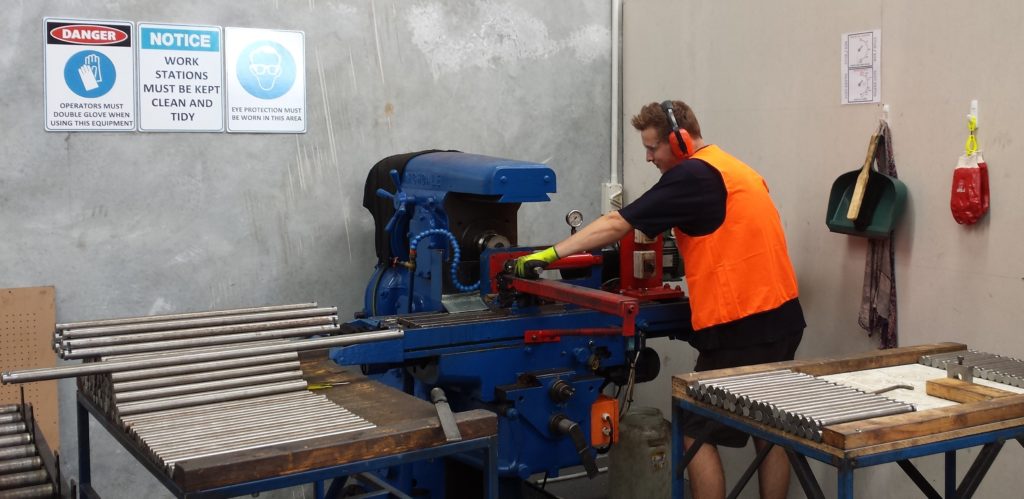 Manufacturers continue to talk about the topics of recruitment and retention. It comes up in almost every conversation, whether it be concerns about the costs and burdens of training new hires that eventually leave the company, to finding and securing welders that are reliable and produce a quality product.
Manufacturers continue to talk about the topics of recruitment and retention. It comes up in almost every conversation, whether it be concerns about the costs and burdens of training new hires that eventually leave the company, to finding and securing welders that are reliable and produce a quality product.
It’s an ongoing problem, and many companies struggle to find new and innovative ways to draw top talent, from online videos, to additional employee perks and benefits. There are a wide variety of reasons why mid-market manufacturing struggles to secure talent, but it’s not for the reasons they think.
It begins with having a better understanding of what roles you need to hire and why, along with understanding what those candidates are looking for in a position with your company. Remember, you are selling yourself just as much as they are selling themselves to you.
Roles – What You Need and Why
There are, in essence, two types of roles that live in your organization – Implementers and Administrators. Implementers are those that get things done in the most traditional sense. They create a product, they launch a campaign, they secure a sale. These roles directly impact your P&L statement. Then there are Administrators. These roles track and account for things, whether it be invoice processing to project management. While essential to have in a successful operation, many companies (as they grow) become heavily weighted with Administration roles. People are expensive, and even if your line or department manager is asking for another body to add to the payroll, it’s essential to fully understand and assess whether you need it. If you have more Administrators than Implementers, you have a problem.
Then there are Administrators. These roles track and account for things, whether it be invoice processing to project management. While essential to have in a successful operation, many companies (as they grow) become heavily weighted with Administration roles. People are expensive, and even if your line or department manager is asking for another body to add to the payroll, it’s essential to fully understand and assess whether you need it. If you have more Administrators than Implementers, you have a problem.
In addition, inefficient processes (such as non-automated or paper-laden activities) make department leaders feel as though they need more bandwidth to effectively manage the burden. Likewise, in the production side of the house, operations that are siloed (including cases where people aren’t cross trained on multiple operations) force leaders into securing more resources to foot the burden.
Middle managers need to fully understand the cost of adding a new headcount. This isn’t simply a flat rate – costs including benefits, healthcare, on-boarding, training, and vacation days all need to be factored in. Are there changes in process, operations, or technology that can address your need more effectively, efficiently and for less money? Are there changes you can make that add more value to the existing staff you have, empowering them to do more and increase their skillsets? Is the need temporary, where you can outsource it for a period of time, or would they have to be laid off after the need passes? Is there someone else in the organization that is underutilized but skilled enough to take on the role with a reasonable amount of training? It’s important to think outside of the box and examine your business processes and needs before simply adding another person to the payroll, especially for the long term. It doesn’t only impact your P&L, but your brand image and the ability to recruit and retain candidates, based on your hiring practices.
Look At The Candidates You’re Seeking
Even though you might have a job posting for a “welder” or an “IT administrator”, outlining the job duties in detail, skillsets needed, benefits and a short paragraph about your company, this is only scratching the surface. When there’s low unemployment or a shortage of skilled workers within a specific field, it’s a candidate’s market. They can become more choosy when it comes to selecting an employer. They look beyond the job and at the organization overall, whether there’s opportunities for personal growth, upward mobility, advancement, skills training, and more.
Even more importantly, is it a great place to work or is that just superficial talk? (No matter what the role, every employee wants to be valued and respected.) Candidates can dig into social media and sites like Glassdoor.com to find out what other employees are saying about your company, and whether it aligns with your messaging. Remember, they are not simply examining what you are offering, but comparing that to other similar or equal roles with your competitors.
Are you selling a job or selling a future to them? If you position the role as disposable, the candidate who takes the role will feel the same way. What’s their motivation and aspirations? Even if you’re hiring for a clear-cut role like a welder, this doesn’t mean their only job is welding. They can help train junior welders, identify ways to produce parts faster, generate ideas to increase quality, or train on other processes and equipment, just to name a few. If your are investing the money to hire a person, you might as well invest in them too. This requires effectively understanding their strengths and weaknesses – not simply from a resume perspective, but from a soft skills perspective. Are they good at problem solving? Are they effective at motivating others? What about generating new ideas or ways to streamline processes? Do they have a talent or interest in an area that would be of value to your organization, even if it’s outside of their defined role? These questions are critical for leaders and managers to answer to maximize each employee’s potential value.
If your are investing the money to hire a person, you might as well invest in them too. This requires effectively understanding their strengths and weaknesses – not simply from a resume perspective, but from a soft skills perspective. Are they good at problem solving? Are they effective at motivating others? What about generating new ideas or ways to streamline processes? Do they have a talent or interest in an area that would be of value to your organization, even if it’s outside of their defined role? These questions are critical for leaders and managers to answer to maximize each employee’s potential value.
There are always a percentage of employees that will come and go, but securing and retaining the right employees are one of your organization’s biggest assets. Equipment is easy to replace – people are hard (and expensive). Tribal knowledge can’t be looked up on Google. The hiring process isn’t just a job for HR – it’s an organization-wide initiative, as new hires are joining a community made up of your employees and leaders.
So, before you start seeking that new candidate, ask yourself first – do you really need this role in house – and calculate the fully loaded costs and returns. If the math works out, sell your organization to candidates openly and honestly. Position yourself differently from the competition. Give them more than just a job, invest in them and their future at your company. Because in the long run, it’s one of the best investments you’ll ever make.



















